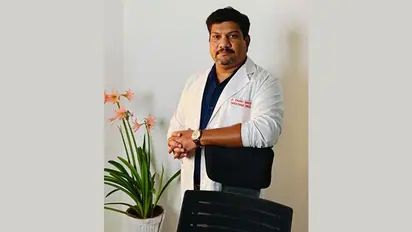The Future of Endodontics and Various Other Challenges: An Expert Guide by Dr. Raghu Narayan

Synopsis
Endodontic regeneration represents a promising frontier in the preservation of compromised teeth.
New Delhi (India0, April 15: Dr. Raghu Narayan, a leading figure in the field of endodontics for over two decades, offers his insights into the future of this evolving specialty and the challenges faced by practitioners.
Endodontic regeneration represents a promising frontier in the preservation of compromised teeth. This approach aims not only to disinfect the diseased tooth but also to revitalize it by encouraging cell growth into the root canal space.
Dr. Narayan emphasizes the potential of this technique, noting its efficacy in both younger, less developed teeth and mature dentition. His insight into the nuances of endodontic regeneration underscores his expertise in the field.
In recognition of the evolving landscape of modern endodontics, Dr. Raghu Narayan established the "Academy of Advanced Endodontics" in Bangalore in 2010.
This visionary initiative serves as a hub for dental practitioners seeking to master cutting-edge techniques and technologies. Through state-of-the-art facilities and ongoing education programs, Dr. Narayan empowers dentists to navigate clinical challenges with confidence and proficiency.
At the core of Dr. Narayan's mission is a commitment to service and education. He not only imparts his knowledge to fellow professionals but also strives to educate the broader society on the latest advancements in endodontics. Through collaborations with dental associations and outreach efforts via various media channels, Dr. Narayan ensures that the benefits of modern endodontic treatments reach far and wide.
While root canal therapy is a well-established method for saving teeth, Dr. Narayan highlights the growing focus on endodontic regeneration. This technique aims to revitalize the tooth by disinfecting it and stimulating cell growth within the root canal space, offering a potential alternative to traditional root canal fillings.
"Regeneration works well in younger teeth with larger apices," explains Dr. Narayan, "but recent studies show promise in mature teeth as well." This advancement offers hope for a more natural approach to saving teeth, particularly for younger patients.
Recognizing the rapid pace of change in endodontics, Dr. Narayan established the Academy of Advanced Endodontics in Bangalore. This academy bridges the gap between academics and clinical practice, empowering dentists with the latest evidence-based approaches and cutting-edge technology.
"The field is fast evolving and highly tech-oriented," remarks Dr. Raghu Narayan. His academy provides a platform for dentists to hone their skills through state-of-the-art facilities and an alumni study club for continuous learning.
Dr. Narayan emphasizes the importance of continuous learning for both educators and practitioners. He dedicates significant time to teaching, research, and attending conferences to stay abreast of the latest advancements.
"Education is a two-way street," he says. "As I teach, I also learn." This dedication allows him to share the latest knowledge with both students and fellow professionals.
Dr. Narayan explores some of the exciting technologies impacting endodontics:
Cone Beam Computed Tomography (CBCT): Offering greater accuracy compared to traditional X-rays, CBCT helps dentists precisely measure lesions, identify anatomical variations, and plan complex procedures.
Augmented Reality and 3D Dynamic Navigation System (DNS): This cutting-edge technology allows real-time visualization of surgical instruments within the treatment area, improving efficiency and accuracy, especially for less experienced practitioners.
These advancements, along with ongoing research, promise a future where endodontic procedures are even more precise, efficient, and patient-friendly.
While the future of endodontics is bright, challenges remain. One key challenge is access to advanced technologies, particularly in remote areas. Additionally, ensuring affordability of these treatments for all patients is crucial.
Dr. Narayan emphasizes the importance of continuous education and collaboration between practitioners and researchers to navigate these challenges and push the boundaries of endodontics.
Disclaimer: This is a featured content